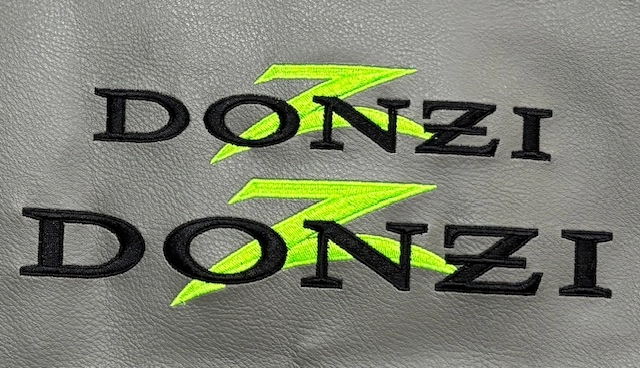Tailored Mugs with Personalized Embroidery Layouts for an One-of-a-kind Present
Tailored Mugs with Personalized Embroidery Layouts for an One-of-a-kind Present
Blog Article
The Art of Personalized Needlework: Opening the Keys to Creating Special and Remarkable Styles
Needlework, a craft soaked in practice and virtuosity, holds within its detailed stitches the power to change textile right into a canvas of one-of-a-kind expression. The tricks to developing custom embroidery designs that astound the eye and leave a lasting impression lie in a fragile equilibrium of strategy, creative thinking, and focus to detail. As we look into the globe of personalized needlework, we reveal the nuanced interaction between thread selection, sew intricacy, and style personalization that elevates a mere garment to a job of art. Join us on a trip with the art of customized embroidery as we unravel the enigmas behind crafting absolutely unforgettable and distinctive productions.
Selecting the Right Embroidery Threads
When choosing embroidery strings, what essential aspects should you take into consideration to make certain the ideal outcomes for your custom designs? The choice of needlework thread is vital in establishing the last result of your stitched style.
Thicker strings can add measurement and structure to your design, while finer strings are optimal for intricate information and small message. Additionally, taking into consideration the shade fastness and washability of the thread is vital to guarantee that your custom styles maintain their high quality and vibrancy over time.
Exploring Various Stitch Methods
To explore the world of 'Checking out Various Stitch Techniques', one have to understand the details and nuances that each stitching approach gives the art of needlework. Different stitch methods not just add aesthetic interest however additionally add to the general appearance and dimension of the layout. One popular stitch method is the satin stitch, which entails carefully packed parallel stitches to produce a smooth and glossy surface area, ideal for filling out forms and creating strong lays out.
On the other hand, the backstitch is a flexible method usually utilized for laying out and adding fine details. It includes sewing in reverse to create a solid line of embroidery. Furthermore, the French knot stitch includes a responsive component to layouts, ideal for developing distinctive accents like blossom facilities or attractive touches.
Exploring different stitch techniques enables embroiderers to play with light, shadow, and depth within their styles, raising the aesthetic allure and imaginative quality of their needlework jobs. By grasping numerous sewing approaches, one can open endless possibilities for creating distinct and unforgettable custom-made embroidery pieces.
Incorporating Personalized Design Elements
Having explored the intricacies of various stitch strategies such as the satin stitch, backstitch, and French knot, the emphasis currently moves towards integrating customized design elements in personalized this contact form needlework jobs. Personalized design elements play a crucial duty in making needlework projects truly unique and remarkable. One method to integrate personalization is by including initials, names, or considerable dates to the layout. This not just adds a personalized touch yet likewise enhances the sentimental worth of the embroidery item.
One more method to incorporate tailored style elements is by including icons or themes that hold unique meaning to the recipient or reflect their interests and individuality. As an example, including a favorite flower, pet, or hobby-related symbol can make the needlework layout much more purposeful and customized. Additionally, selecting shades that reverberate with the recipient or align with the designated motif can further improve the customization of the embroidery job.
Grasping the Art of Shade Coordination
One trick aspect of shade coordination is comprehending shade theory. This includes recognizing how different shades interact with each other, the feelings they convey, and exactly how they can be incorporated to produce aesthetically enticing designs. By applying shade concept principles, embroiderers can produce unified shade schemes that enhance the pop over to these guys general appearance of the layout.
Additionally, focusing on comparison is crucial in color sychronisation. Making use of contrasting shades can help certain aspects of the style pop, boost readability, and create a visually dynamic embroidery item. By understanding the art of shade control, embroiderers can boost their designs and create memorable pieces that resonate with customers and customers alike.
Enhancing Appearance With Advanced Needlework Stitches

French knots, as an example, tailored fit dress pants are excellent for adding small, increased dots to your style, simulating the appearance of grains or producing a textured surface. Bullion knots, on the other hand, can be utilized to produce twisted, ropelike aspects that include a lavish feel to the embroidery. Seed stitching includes little, scattered stitches that can complete locations with a speckled structure, while turkey work creates fluffy, dimensional accents reminiscent of pet hair or vegetation. Trying out these sophisticated embroidery stitches enables you to press the boundaries of standard needlework and create genuinely one-of-a-kind and visually appealing appearances in your layouts.
Conclusion
In conclusion, the art of personalized needlework involves a mix of selecting the best strings, checking out various stitch strategies, integrating customized layout aspects, mastering shade coordination, and enhancing appearance with sophisticated stitches. By understanding and carrying out these crucial elements, embroiderers can produce one-of-a-kind and unforgettable layouts that showcase their creative thinking and skill. Needlework enthusiasts can open the secrets to producing stunning and bespoke items that stand out and leave an enduring impact.
Report this page